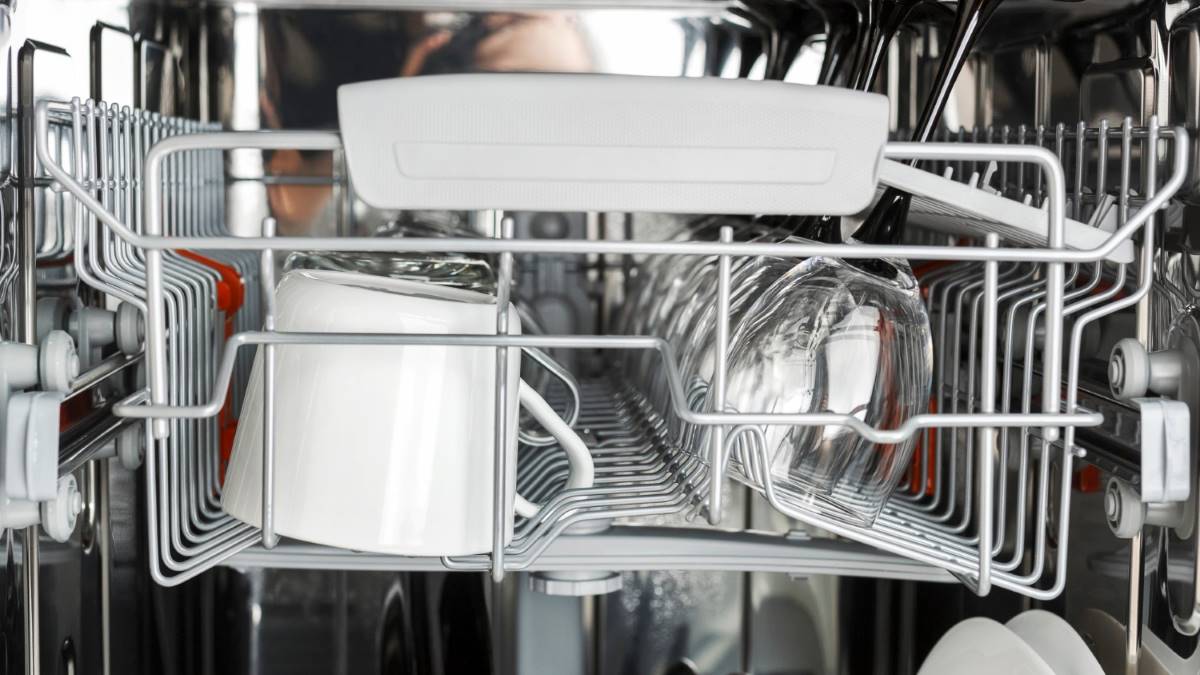The dishwasher is one of the most convenient appliances in a modern kitchen — but even machines designed to clean need cleaning themselves. Over time, grease, food residue, limescale, and unpleasant odors can build up inside, reducing both the performance and hygiene of your dishwasher.
Fortunately, a few simple maintenance steps can keep your dishwasher fresh, efficient, and long-lasting. In this guide, we’ll show you how to clean it properly, how often to do it, and which products to use to maintain optimal performance.
Why Cleaning Your Dishwasher Matters
You might assume that because your dishwasher is constantly exposed to hot water and detergent, it stays clean on its own. However, that’s not entirely true. Over time, food particles, grease, and mineral deposits from hard water accumulate in key parts of the machine — especially in the filter, spray arms, and seals.
If left unattended, these can lead to:
-
Unpleasant odors
-
Cloudy dishes or water spots
-
Reduced cleaning efficiency
-
Clogged drains and spray arms
-
Shortened appliance lifespan
Cleaning your dishwasher regularly not only improves hygiene and efficiency, but also saves you money in the long run by preventing breakdowns and costly repairs.
How Often Should You Clean Your Dishwasher?
Different parts of the dishwasher require cleaning at different intervals. Here’s a simple guide:
-
Filter: Every 1–2 weeks
-
Spray arms and seals: Once a month
-
Deep cleaning (interior, door, drain): Every 1–2 months
-
Descaling: Every 3–4 months (or more often in areas with hard water)
If your dishes aren’t coming out clean, or you notice a musty smell when you open the door, that’s a sign your dishwasher is due for a thorough clean.
Step-by-Step Dishwasher Cleaning Guide
Cleaning your dishwasher is easier than you might think. Here’s how to do it effectively:
1. Clean the Filter
The filter is located at the bottom of the dishwasher and is responsible for trapping food particles. If it’s clogged, it can’t do its job properly.
-
Remove the lower rack.
-
Twist and lift the filter out (refer to your dishwasher manual if needed).
-
Rinse it under warm running water. Use a soft brush to remove stubborn debris.
-
Let it dry and reinstall it.
2. Clear the Spray Arms
Spray arms distribute water throughout the dishwasher. If the small holes become blocked, dishes may not get properly cleaned.
-
Remove the spray arms (check if your model allows this).
-
Use a toothpick or a fine wire to clear any clogged holes.
-
Rinse the arms under water, then replace them.
3. Wipe the Seals and Door Edges
The rubber seals around the door and the edges of the tub can collect grime and mildew.
-
Use a damp cloth with a little dish soap or vinegar.
-
Wipe the seals, hinges, and the door’s interior.
-
For stubborn spots, a toothbrush can help.
4. Deep Clean the Interior
You can perform a deep clean using natural ingredients or specialized cleaning products.
Option A: Vinegar and Baking Soda Method
-
Place a bowl with 1 cup of white vinegar on the top rack.
-
Run a hot water cycle with the machine empty.
-
After that, sprinkle 1/2 cup of baking soda on the bottom of the dishwasher.
-
Run a short hot cycle to freshen and deodorize.
Option B: Dishwasher Cleaner Products
-
Use a branded dishwasher cleaning solution (like Finish or Somat).
-
Follow the instructions on the packaging — usually, it involves placing the bottle upside down and running a hot cycle.
5. Don’t Forget the Drain
Food waste can collect in the drain area, leading to clogs and bad smells.
-
After removing the filter, check for debris in the drain area.
-
Carefully wipe or remove any visible buildup with a cloth or sponge.
How to Prevent Buildup in the First Place
In addition to regular cleaning, there are a few habits that can help keep your dishwasher running smoothly:
-
Scrape, don’t rinse: Remove large food scraps before loading dishes, but no need to pre-wash — modern dishwashers are designed to handle some residue.
-
Don’t overload: Overstuffing the dishwasher can block the spray arms and prevent water from reaching all the dishes.
-
Run hot cycles regularly: Low-temperature eco cycles save energy but may not kill bacteria or dissolve grease effectively. Run a hot cycle at least once a week.
-
Use rinse aid: This helps prevent spots and keeps the dishwasher clean inside.
-
Use dishwasher salt: Especially important in hard water areas, it softens the water and prevents limescale buildup.
What About the Exterior?
While you’re cleaning the interior, don’t forget to give the outside a wipe too:
-
Use a microfiber cloth and mild detergent to clean the door front.
-
For stainless steel, use a dedicated stainless steel cleaner or a vinegar-water solution to remove fingerprints and streaks.
Keeping the exterior clean gives your whole kitchen a fresher, more polished look.
Signs That Your Dishwasher Needs a Deep Clean
Here are a few common warning signs:
-
Your dishes come out dirty or with residue
-
The machine smells musty or foul
-
Visible grime or mold on seals or interior surfaces
-
Water doesn’t drain properly
-
The dishwasher sounds louder than usual
If any of these occur, it’s time to roll up your sleeves — or grab a cleaning tablet.
Final Thoughts: A Little Maintenance Goes a Long Way
Cleaning your dishwasher might not be the most glamorous task, but it’s a crucial part of kitchen maintenance. With just a few minutes of care each month, you can prevent odor, extend your appliance’s life, and ensure your dishes come out sparkling clean every time.
Don’t wait for your dishwasher to show signs of trouble — keep it fresh and functional with routine cleaning, and enjoy the long-term benefits of a well-maintained machine.
For the full original Hungarian-language article, visit:
Full article: https://butorhonlap.hu/mosogatogep-tisztitasa-igy-orizd-meg-a-hatekonysagot-es-a-frissesseget/
Website: butorhonlap.hu
